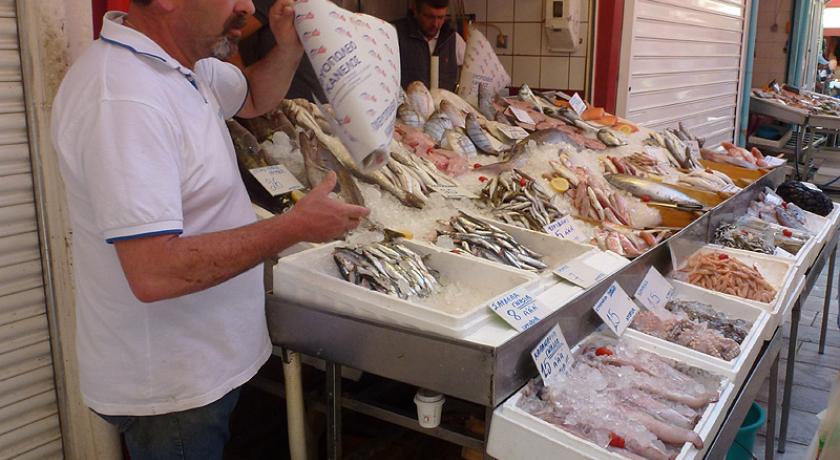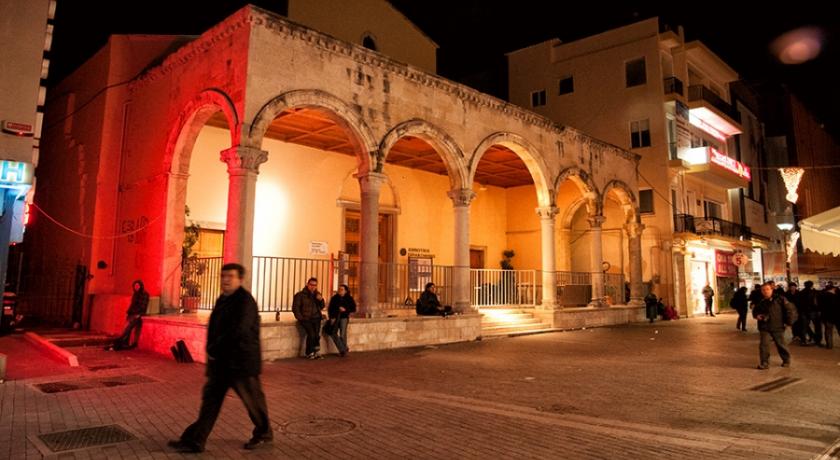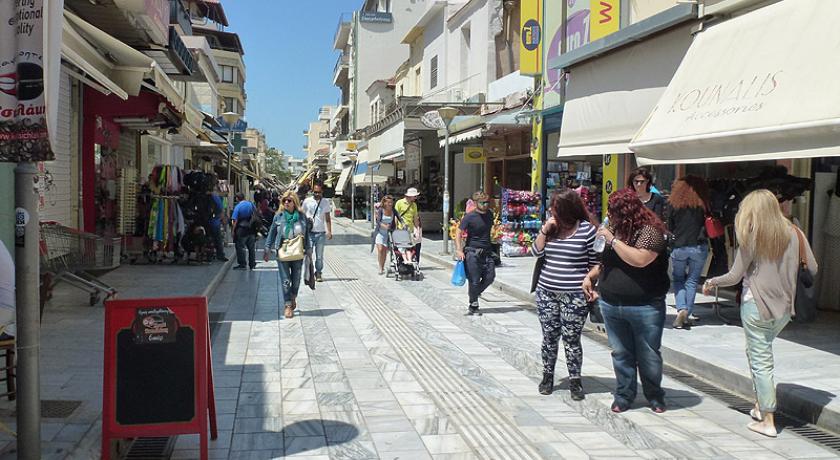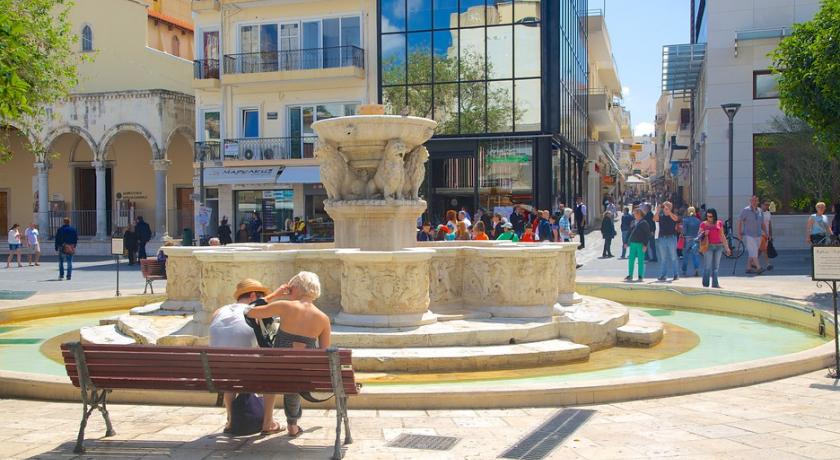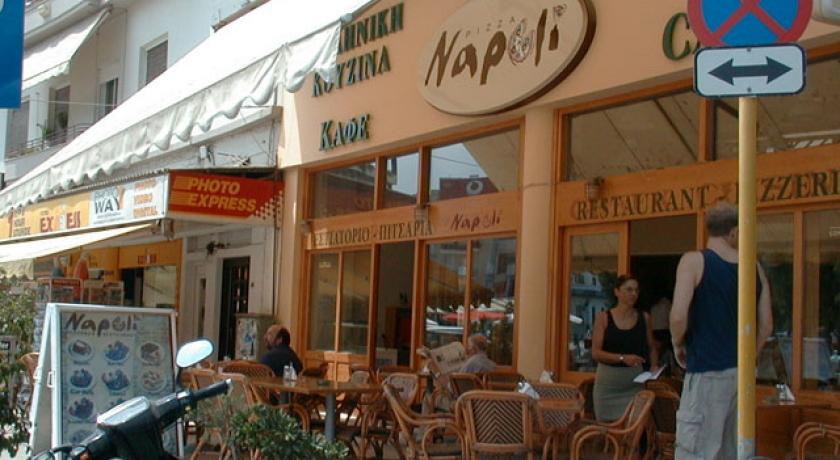Description
Meidani or Nikiforou Foka Square
The Meidani is the central crossroads of Heraklion, where 25th of August Street (the pedestrian street that comes up from the harbour, passes in front of the Lions and continues south by the name of 1821 Street) crosses Dikeosinis Avenue, which runs from Eleftherias Square and continues as Idis Street and Kalokairinou Avenue (or Platia Strata) towards Kamaraki and the Chania Gate.
The Meidani is also known as the "cross" of Heraklion. This is where the three Epitaphioi, the biers of Christ, from the churches of Saint Minas, Saint Titus and Agios Dimitrios, meet on Good Friday.
The three processions with their respective Epitaphioi, priests and faithful stop at the Meidani, and prayers for the city are chanted in an atmosphere of devotion, accompanied by the town band and scented with the rosewater sprinkled in the streets.
The Meidani is also linked to another custom revived on the last day of each year, when the Heraklion Traffic Police place a traffic policeman here in his "varela", the protective barrel-shaped structure in which policemen used to stand many decades ago when regulating traffic at the central crossroads of Heraklion.
The Meidani is officially known as Nikiforou Foka Square, in honour of Nicephorus Phocas, the liberator of Heraklion and the whole of Crete from the Arab pirates in 961 AD. Phocas was a Byzantine general who was later crowned Emperor, while today he is worshipped as a saint.
The word Meidani is derived from the Turkish meydan (maidan, or open space), and the inhabitants of Heraklion still know the square by this name today. The Venetians called it the Piazza delle Erbe, meaning Vegetable Square, because this was where the central Heraklion fruit, vegetable and meat market began, as it still does today.
Until 1856, people used to pass from the Lions (Eleftheriou Venizelou Square) to the Meidani (Nikiforou Foka Square) through the imposing Venetian Voltone Gate, the main gate of the Arab-Byzantine wall of Heraklion. Today neither the wall nor the Voltone Gate survives; the Gate was destroyed in the great earthquake of 1856.
Today the Meidani is the heart of the commercial centre of the city and the entrance to the Heraklion central market with its fruit and vegetable stalls, tourist shops and butchers' shops.
source http://www.explorecrete.com/Heraklion/EN05-Heraklion-meidani.html
Address
Heraklion
Greece
Lat: 35.334697723 - Lng: 25.162170410


